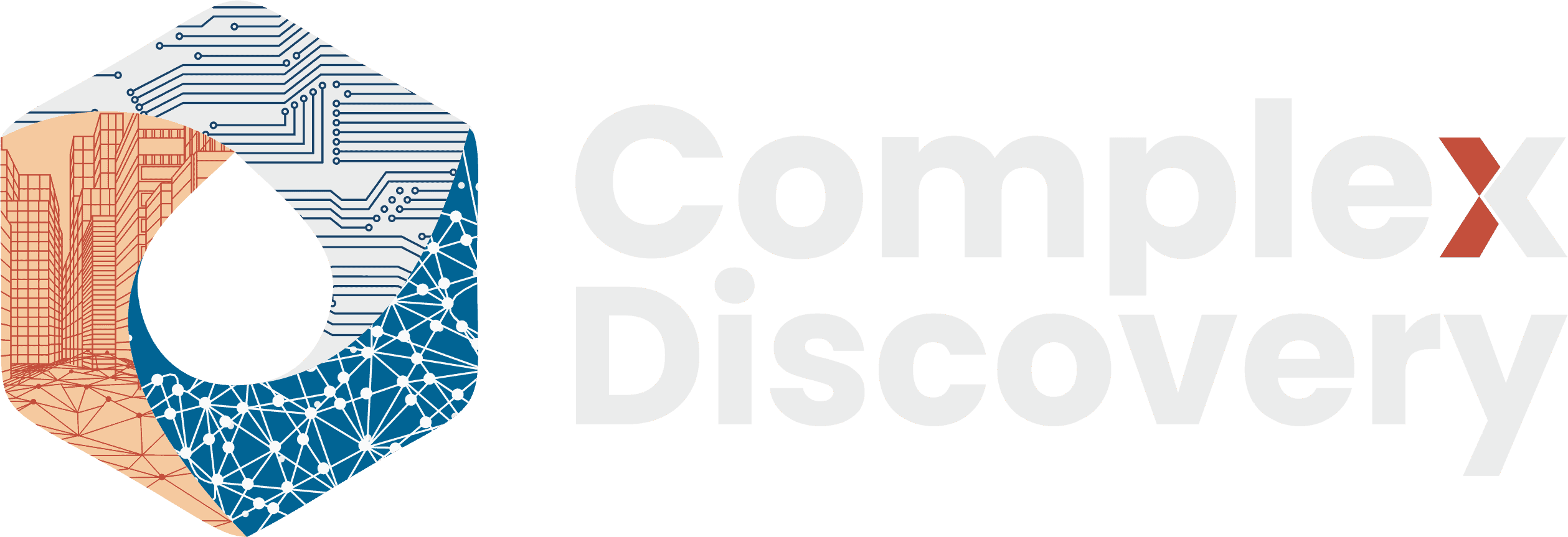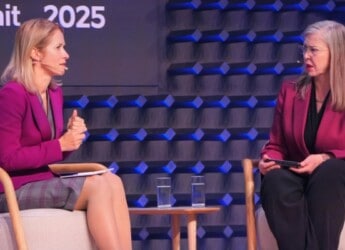Editor’s Note: In our recently published interim report on the 2H 2025 eDiscovery Business Confidence Survey, we introduced a new approach to closing the gap between survey fielding and insight delivery. That report blended 37 real responses with 62 statistically modeled entries to offer early, directional intelligence—without waiting for the full survey to close. This companion article takes the next step: it introduces the 15 participant personas—both real and synthetic—that shaped the interim analysis and brought voice to the market’s evolving sentiment.
Importantly, this modeling approach does not replace or diminish authentic response data. Real responses remain central to our methodology and will anchor the final report. Rather, persona modeling extends and enhances interim visibility—accelerating the availability of insight while maintaining methodological transparency and integrity.
By giving each modeled and actual response a narrative identity, we move beyond simple metrics to explore how different roles across law firms, corporations, service providers, consultancies, and government entities are interpreting shared market conditions. These personas help us understand not just what the market is saying, but who is saying it—and how their perspective may shape legal tech adoption, risk posture, and strategic focus.
This work lays the foundation not only for the final 2H 2025 survey release, but also for a more responsive, repeatable survey strategy in the future—one that empowers the entire eDiscovery community with timely, trustworthy intelligence in a market that rarely waits.
Contribute your voice to the final results: Take the 2H 2025 eDiscovery Business Confidence Survey at: eDiscovery Business Confidence Survey 2H 2025.
Content Assessment: Putting Faces to the Future: How Interim Persona Modeling Enhances Legal Tech Market Intelligence
Information - 94%
Insight - 94%
Relevance - 91%
Objectivity - 92%
Authority - 91%
92%
Excellent
A short percentage-based assessment of the qualitative benefit expressed as a percentage of positive reception of the recent article from ComplexDiscovery OÜ titled, "Putting Faces to the Future: How Interim Persona Modeling Enhances Legal Tech Market Intelligence."
Industry Research
Putting Faces to the Future: How Interim Persona Modeling Enhances Legal Tech Market Intelligence
ComplexDiscovery Staff
In fast-moving markets, waiting months for complete survey data creates a strategic blind spot. By the time traditional surveys close, compile, and publish—often a two-to-three month cycle—market conditions have shifted, budgets have been set, and opportunities have passed. This survey lead/lag time challenge particularly affects smaller legal tech players who lack access to proprietary research but need the same strategic intelligence as their larger competitors.
This hybrid approach—combining real survey responses with statistically-grounded synthetic personas—offers a solution that delivers responsible, transparent early intelligence while democratizing market insights and maintaining methodological rigor.
The Foundation: Building on Transparency
In our interim report on the 2H 2025 eDiscovery Business Confidence Survey, we introduced a hybrid analytics approach. This responsible, transparent method blended real responses with modeled projections to provide directional insight during an active field period. At the heart of that approach were 15 participant personas: structured profiles that brought depth, identity, and interpretability to the survey’s 99 responses.
This post expands on that foundation, presenting those personas not just as modeling constructs but as human narratives—a way to put faces on the insights that drive legal tech decision-making in a time of accelerated change.
A Structured Yet Human Framework
The interim dataset combined 37 authentic, as-fielded responses with 62 synthetic responses generated through probability-based persona modeling. This modeling wasn’t arbitrary. It was grounded in the known segment and seniority structure of the eDiscovery ecosystem, using distributions from the current 2H cycle and validated data from the 1H 2025 survey.
Each response in the dataset—whether real or synthetic—was mapped to one of 15 well-defined personas. Ten synthetic profiles were designed to simulate underrepresented or late-responding groups, while five real personas summarized observable patterns from actual participants. These personas ensured that interim reporting could move beyond surface-level statistics to show how different segments and roles are experiencing the market in real time.
While synthetic responses extended the dataset’s reach, the real personas captured the character of the actual participants. The 37 real responses weren’t confined to these five profiles, but the personas provide a narrative lens through which to organize and understand their insights.
Meet the Personas
The following narratives bring each persona to life, turning data points into people—and modeling into meaning.
The LegalTech Strategist leads product and go-to-market strategy in a competitive vendor space, evaluating GenAI not for its hype, but for its ROI and retention impact. Meanwhile, the Litigation Partner evaluates tech for its courtroom relevance and cost containment value, seeing AI through the lens of risk and client impact.
The Corporate Legal Ops Lead serves as the deal-closer behind enterprise procurement—measuring efficiency, integration, and internal usability with an ROI lens. In contrast, the eDiscovery Project Manager runs the day-to-day grind of delivery, focused on stability, speed, and measurable results.
Within government circles, the Government Legal Technologist manages change from within bureaucracy—pacing innovation with explainability and defensibility at the forefront. The Law Firm eDiscovery Counsel manages privilege boundaries and procedural integrity with caution, precision, and ethical grounding.
The Innovation Lead guides legal departments through transformation—bridging buzzwords with buy-in, and always watching for what’s next. Standing guard over all initiatives, the Security and Compliance Advisor serves as the watchdog—vetting tools for data safety, access control, and audit readiness.
The Government Technology Buyer doesn’t move fast—but when he does, it’s based on provable value, procurement discipline, and zero tolerance for hype. At the implementation level, the AI Adoption Specialist is where the rubber meets the road, implementing, training, and troubleshooting—making GenAI real for users, or not at all.
Among the real personas derived from actual responses, the Law Firm Executive manages cost centers and capital investment in a tight market—wary of unproven tech and focused on partner value. The Corporate Legal Manager balances department KPIs, vendor pressure, and IT requirements as an optimizer with little room for risk. The Government Analyst deals with discovery demands and transparency rules—hoping tools can help while watching the budget. The Law Firm Technical Manager ensures things work and work well, serving demanding users with a low tolerance for friction. Finally, the Service Provider Executive drives growth and shapes offerings while watching GenAI closely—but won’t move unless it helps win clients.
Personas in Action: Early Insights from Divergent Perspectives
The power of persona modeling becomes clear when we examine how different market segments are experiencing the same trends. Consider the divergence between our Government Technology Buyer and LegalTech Strategist personas on GenAI adoption.
The LegalTech Strategist reports aggressive GenAI integration timelines driven by competitive pressure and client demands. The Government Technology Buyer, however, maintains a twelve-to-eighteen-month evaluation cycle, prioritizing explainability and audit trails over speed to market. This two-speed adoption pattern, visible only through persona-based analysis, suggests vendors need differentiated go-to-market strategies rather than one-size-fits-all approaches.
Similarly, the tension between the Law Firm Executive focused on partner buy-in and cost containment and the AI Adoption Specialist advocating for scaled implementation reveals an internal change management challenge that pure sentiment scores would miss. The personas show us it’s not just about whether firms are adopting GenAI, but about how internal dynamics are shaping the pace and scope of that adoption.
Validation: Measuring What Matters
When the 2H 2025 survey closes in November, we’ll conduct a comprehensive validation analysis comparing our persona-based projections with final results. This validation will examine whether our personas correctly identified major trends such as ROI pressure and adoption patterns. We’ll assess how well synthetic personas represented their segments compared to late-arriving real responses. We’ll evaluate which persona-generated insights proved most valuable for strategic planning. And we’ll identify what adjustments would improve accuracy in future cycles.
This approach isn’t just an academic exercise—it’s about building a methodology the industry can trust. By transparently sharing both successes and misses, we’re inviting the community to help refine an approach that could transform how we understand rapidly evolving markets.
Laying the Groundwork for Future Cycles
By embedding persona modeling into this survey cycle, we’ve opened a path forward. Future iterations of the eDiscovery Business Confidence Survey can continue to evolve this persona architecture—refining profiles, enhancing weighting models, and integrating segmentation logic directly into real-time dashboards and nowcasting tools.
More importantly, this framework helps legal professionals understand that the market isn’t moving in one direction—it’s moving in many, depending on role, risk, and responsibility. With each survey, we gain more than responses—we gain insight into the people behind them.
As the 2H 2025 survey continues through November, these personas will remain a guide—transparent, anchored, and ready to adapt to what the data tells us next. The survey remains open, and we encourage all eDiscovery professionals to participate. Your response will directly improve the real-to-synthetic ratio and enhance the validity of our final analysis.
This methodology represents more than an interim report—it’s an opportunity to collectively advance how our industry understands itself. Together, we can build market intelligence that’s both faster and more trustworthy, helping organizations of all sizes navigate legal tech’s rapid evolution.
The 2H 2025 eDiscovery Business Confidence Survey remains open through November 2025. The final results are expected to be published in December 2025.
Assisted by GAI and LLM Technologies
Additional Reading
- Interim Signals: A Hybrid Nowcast of GenAI ROI and Market Caution in 2H 2025 eDiscovery
- eDiscovery Business Confidence Survey 2H 2025
- 1H 2025 eDiscovery Business Confidence Survey Results Released by ComplexDiscovery OÜ and EDRM
- eDiscovery Surveys Archives – ComplexDiscovery
Source: ComplexDiscovery OÜ


























